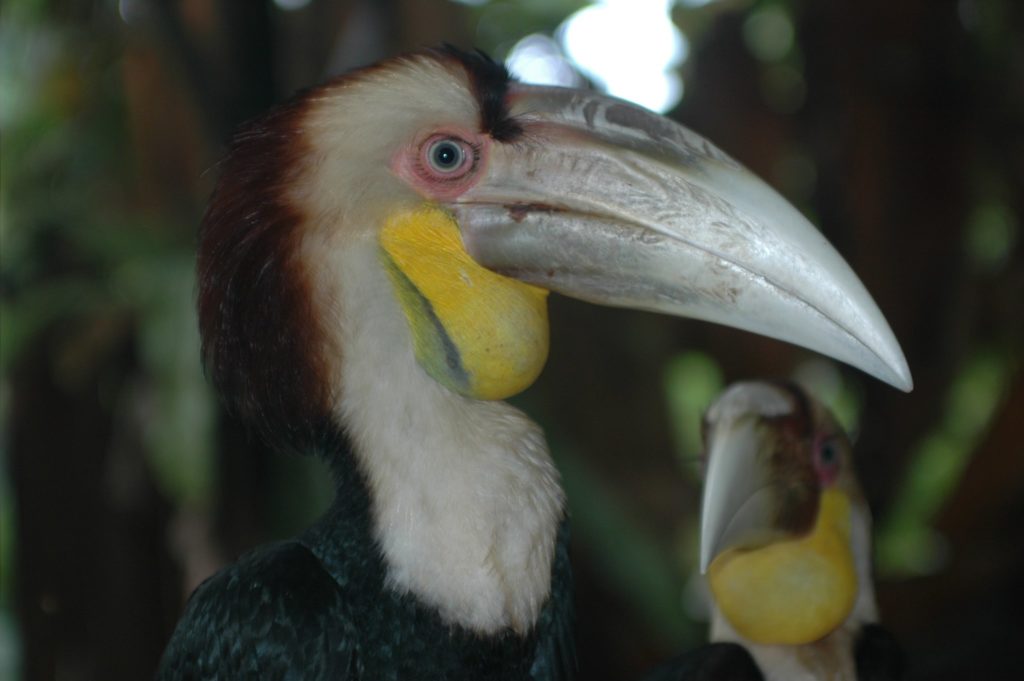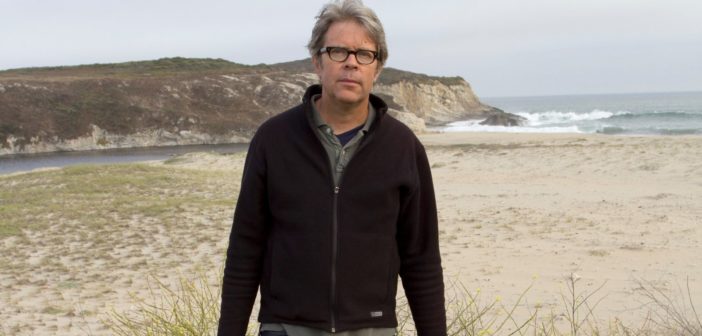Jonathan Franzen wasn’t always a birder. But a chance encounter in a local park in his 40s inspired his move to become a passionate environmental activist. After penning the opening essay for National Geographic’s Year of the Bird, ‘Why Birds Matter,’ he has now released a book of nature essays, The End of the End of the Earth. Franzen talks to BirdLife about his writing inspirations, his hopes for the planet’s future, and which of his controversial views have ruffled feathers in the conservation world.
Birdlife: Your writing really brings birds to life. What’s your trick for persuading those who didn’t previously care about birds to pay attention?
Jonathan Franzen (JF): You have to tell a human story in one way or another: at a pinch, I just write about myself and my own compulsion and obsession as a birdwatcher. A lot of my journalism these days consists of direct or indirect advocacy for birds, and because a lot of the threats to birds are caused by human beings, there are plenty of stories to tell. I have written a couple of times about the persecution to migratory birds on both sides of the Mediterranean, worst of all in Egypt. The advantage there is that I can get to know the people who are persecuting as well as the people who are trying to defend. And so it’s an inherently dramatic story.
Birdlife: Your keynote essay for National Geographic’s Year of the Bird was entitled “Why Birds Matter.” For someone not necessarily interested in birds – why do they matter?

A pair of gadwalls in New York City’s Central Park. Birds are all around us even in the most human-centered landscapes. Image credit Wolf Gordon Clifton / Animal People, Inc.
JF: Well, the conclusion I came to in that piece, after describing the majesty of birds, was that their economic value is not what matters. And I am unpersuaded by the argument that they are important indicators of the health of the ecosystem. What I came to is that they are ambassadors of a natural world that is receding from us. Fewer and fewer people are able to experience nature in any direct way, with the exception (for most people) that birds are still present. They are present in migration, they show up in your tree in the backyard at certain times of the year. Then there are the resident birds that are completing their life cycle in your backyard: one of the few natural life cycle phenomena that almost everyone in the world has access to. First, you can try to widen the circle of people who care about birds to anyone that cares about nature at all, and then you can widen a little further to potentially any human being and say ‘birds ruled the world for 65 million years or more. They were the ones that spread out and rapidly evolved to fill every conceivable ecological niche in massive numbers for tens of millions of years and it’s only in the last few centuries that they have been supplanted by a single species.’ I think there is an ethical argument to be made for paying some respect to another amazing kind of animal that evolution has produced.
Birdlife: In the last issue of the magazine we ran a piece which focused on the economic value of birds, which caused some debate in the office. As a species, are humans always doomed to look at other species relative to what they can do for us?
JF: For most people, birds are something that makes life more interesting. But if it comes down to human baby vs bird population, 99% of people are going to pick baby, and there is nothing we can do about it. So in a way we are granting the economic system that controls the world too much to make the argument on economic terms. You need to shift the focus to ethics.
Birdlife: You came into birding relatively late. When was the moment that you really started paying attention to them?
JF: The short story is that I saw a veery (Catharus fuscescens), a beautiful thrush who spends winter in America. This was a park that I knew in and out – I had spent 10 years taking daily walks in that park. It was only when I went for a walk with a birding sister and her husband, binoculars in hand, that I realized I didn’t know the park at all. It was May and I think we saw 60 species of migrants that afternoon. It was one of the great revelations in my life: that there was a hidden world that had been invisible to me but present in plain sight for 40 years. It was just incredible.
Birdlife: Where are some of the best places you have been to bird?
JF: If I were to send someone on one trip anywhere in the world to get them into birds, it would probably be higher-elevation east Africa. Also the great national parks of Kenya and Tanzania, because birds are so easy to see and the diversity is just extraordinary. In two and a half weeks you will see 500 species of bird, and they are not all little brown jobs. They are spectacular chacos, bee-eaters and hornbills. To me, the great experiences are about seeing new things, but also about seeing healthy populations. Often, the pleasure of seeing a rare species is undercut by concern over its decline, so to see the vast scale of some is great.
Birdlife: What is the most incredible bird you have seen in person?
JF: In the National Geographic piece I mention the great hornbill (Buceros bicornis). Probably the single greatest nature experience I ever had was hearing two of them fly in and then watching them eat fruit from a tree in eastern India, because they are so big and so wonderful. The combination of sheer physical splendor and super cuteness is great.

Hornbill. Image credit Kim Bartlett – Animal People, Inc.
Birdlife: Which bird have you yet to see first-hand that is a must on your list?
JF: There a couple parrots in Australia, the princess parrot (Polytelis alexandrae), and of course the night parrot (Pezoporus occidentalis). The night parrot for being presumed extinct for so long and the excitement of realizing there might actually be quite a number of these out there – it may not just be a single population.
Birdlife: I want to touch on climate change because I feel it is something you have been misunderstood on in the past. It is obviously a big looming threat, and your argument is that it distracts the discussion from areas where we can maybe make more prudent gains in the short term; is that correct?
JF: That is part of it; I think the number one imperative is to admit that we failed to stop it. Does that mean we should stop trying to reduce our carbon emissions? No. Does that mean we shouldn’t do everything we can to adapt and mitigate? No. But let’s admit that this is a crazy bad problem. The other thing is that if you are trying to motivate people to do something for nature, trying to frighten them or make them feel guilty is not a winning strategy. But this, unfortunately, has become the strategy with climate change. It hasn’t worked, and so I become attracted to problems that do have short-term solutions and you can see the results immediately. Seeing visible changes in environments that people love is what is going to motivate them to protect nature.
Birdlife: The conservation world is currently focusing on the biodiversity crisis; are we in danger of going down the same route again?
JF: I think that is a useful internal conversation to be had: I think it helps within the conservation world to establish what our priorities may be. But I do think that for the average person that cares a little bit about nature, but isn’t an expert, it’s just another distraction.
Birdlife: What is the number one thing that individuals can do to make the world better for birds?
JF: It has to be tailored to the particular place: the number one thing to do in Santa Cruz is not the number one thing to do in London. If you have a cat you should keep it indoors, and the results will be visible: you will see more birds in your backyard. I do think the improvement of local habitat would have to be high on the list. The most moving thing I witnessed in my reporting for this collection was on Chatham Island off the coast of New Zealand. One sheep and cattle-farming family decided they were going to devote decades of their lives to improving the habitats of the magenta petrel (Pterodroma magenta). Soon, other neighbors started to get the same idea. For decades, there had been no concern for what invasive species are doing to Chatham Island. Now, scores of neighbors are starting to fence their bush and to get the introduced predators out. Again, they can see the results: you are able to see the petrel that almost went extinct. It’s about people’s ownership and pride in their own backyard.

A veery, the bird that first inspired Jonathan Franzen and made him realize that he had been ignoring a whole world of bird lives going on all around him. Image credit Aaron Maizlish, CC BY-SA 3.0.
Birdlife: you think we will be able to turn things around? Are you positive about the future of the planet?
JF: Well, if we stopped emitting all carbon globally tomorrow, temperatures would still rise for several centuries. Certain vicious circles have been set in place, particularly in the Arctic: possibly mega-releases of methane when the ice melts. Which it will, regardless of what we do. It is difficult to be optimistic. Yes, the wonderful world that was largely extant when I was growing up may be gone in a century and a half, but I love those birds so much – it gives me a reason to do something every day. My life has meaning right now and that is all you can ask for.
Jonathan Franzen’s book of essays, The End of the End of the Earth, was published by 4th Estate in November 2018 and is available in most major bookstores.
Featured image: Jonathan Franzen, author of The End of the End of the Earth. Image credit Shelby Graham.





